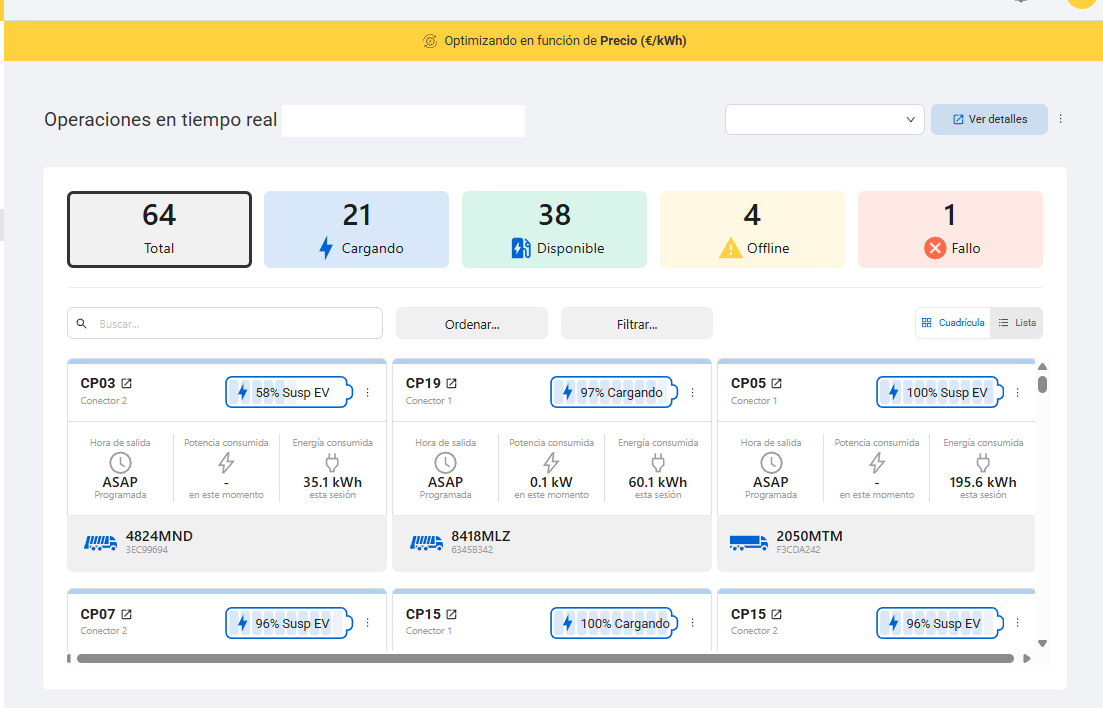

The integration between Fleet Management Systems (FMS) and Charge Management Systems (CMS) has become a critical success factor for electric fleet operators.
Bia enables seamless communication between both systems, helping operators unlock the full potential of charge optimization (smart charging and dynamic load management) and on-road optimization
With this integration, fleets can:
This connection bridges two complementary worlds: logistics intelligence and energy intelligence. Together, they form the foundation for efficient, scalable, and cost-effective fleet electrification.
To deliver optimal smart charging, Bia’s software requires only two key data points per vehicle:
Using this data, Bia’s EV charging management software determines both the required energy and power to ensure every vehicle is fully charged before departure — while minimizing costs and respecting electrical constraints.
The way data is shared depends on the charger type:
In both scenarios, a simple one-way API integration (FMS → CMS) provides the minimum data needed for smart optimization of charging sessions.
Beyond the minimum setup, Bia offers advanced integrations between FMS and CMS with bi-directional data exchange and deeper interoperability.
This allows:
While advanced integration takes more time to implement, it offers powerful benefits — a unified operational view, faster decision-making, and stronger energy performance analytics.
Bia has successfully integrated its charge management platform with multiple leading Fleet Management Systems:
Bia also supports custom API integrations with in-house fleet management systems — a popular choice among operators like EMT Madrid, EMT Valencia, and Alsa — allowing automatic retrieval of vehicle schedules and real-time optimization of charging operations.
Integrating both systems unlocks significant advantages:
With Bia Smart Charging, operators transform complexity into clarity — achieving higher uptime, lower total cost of ownership (TCO), and smoother depot operations.
For modern fleet operators, integrating Fleet Management and Charge Management Systems is no longer optional — it’s a cornerstone of efficient electrification. With Bia’s smart charging software, fleet managers can simplify complexity, reduce costs, and operate with confidence as they scale toward a fully electric future.